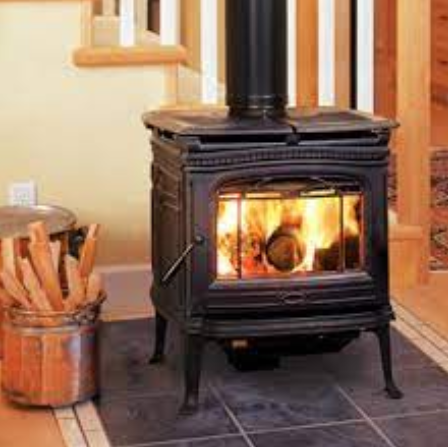As the allure of cozy homes and sustainable heating options grows, many homeowners are turning to wood-burning stoves as a modern alternative to traditional fireplaces. While both evoke images of warmth and comfort, wood-burning stoves offer a range of benefits that surpass those of their traditional counterparts.
-
Efficient Heating and Energy Conservation:
Wood-burning stoves are renowned for their high efficiency in converting wood fuel into heat. Unlike traditional fireplaces that often lose a significant amount of heat through the chimney, stoves are designed to radiate and distribute heat more effectively throughout the room. The enclosed structure of the stove allows for better control of combustion, resulting in a more efficient use of the wood’s energy and a warmer, more comfortable living space.
-
Cost-Effective Heating Solution:
Wood-burning stoves can be a cost-effective alternative to traditional fireplaces, especially in regions where firewood is readily available. The controlled burn and efficient heat transfer of a stove mean that less wood is needed to produce the same amount of warmth as an open fireplace. This not only reduces fuel costs but also makes wood-burning stoves a budget-friendly option for those seeking an economical heating solution.
-
Environmental Friendliness:
In an era where environmental sustainability is a key consideration, wood-burning stoves shine as eco-friendly heating options. When sourced responsibly and burned efficiently, wood is considered a renewable and carbon-neutral fuel. Modern stoves are designed with advanced combustion technology, emitting fewer pollutants into the atmosphere compared to traditional fireplaces. This makes wood-burning stoves a more environmentally conscious choice for those seeking to reduce their carbon footprint.
-
Safety and Controlled Combustion:
Safety is a paramount concern when it comes to home heating, and wood-burning stoves address many of the safety issues associated with traditional fireplaces. The enclosed nature of a stove reduces the risk of sparks or embers escaping, decreasing the potential for accidental fires. Additionally, the controlled combustion environment minimizes the buildup of creosote in the chimney, reducing the risk of chimney fires.
-
Space-Saving Design:
Wood-burning stoves are available in a variety of sizes and styles, making them adaptable to different room layouts and design preferences. Unlike traditional fireplaces that require substantial space and construction, stoves can be installed in smaller areas and still provide ample heating. This space-saving feature makes wood-burning stoves an excellent choice for homes with limited room for a traditional fireplace.
-
Versatility in Design and Function:

